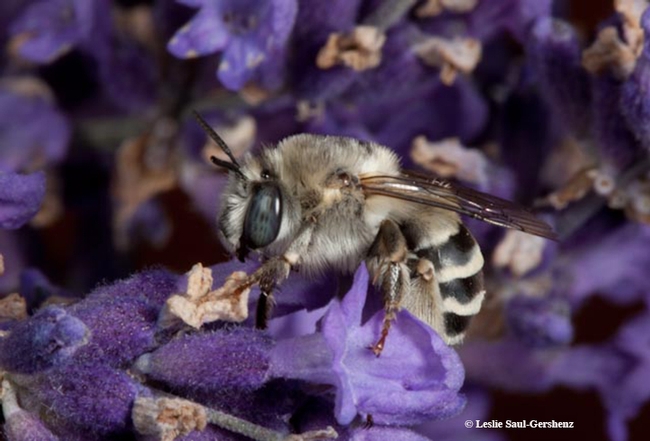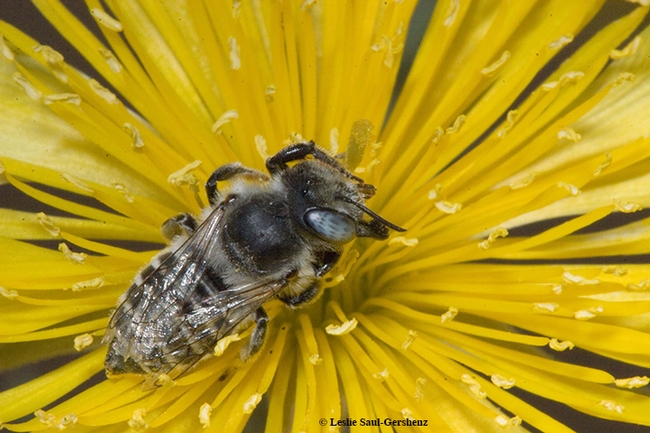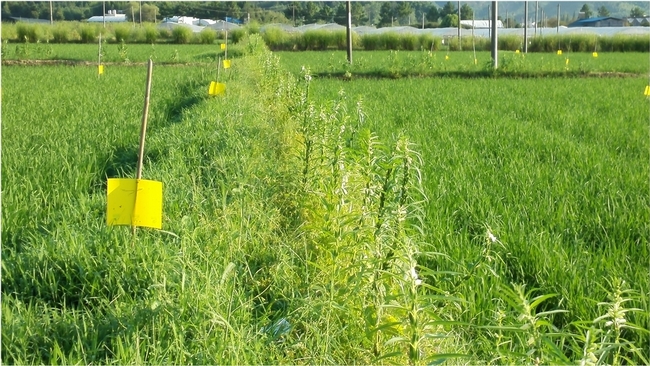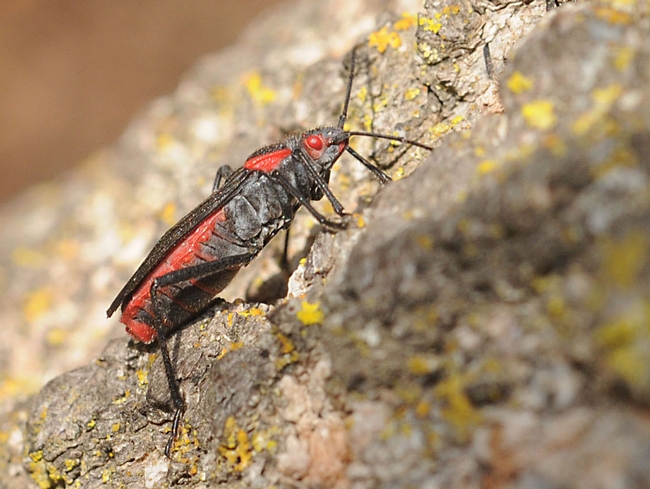Posts Tagged: Nature journal
Pollinator Habitat: Important Part of Solar Energy Study
Solar energy should not only be used to benefit global sustainability, but to protect our global ecological systems, including climate, air quality,...

Solar energy can be used to protect pollinator habitat, according to a research paper published July 9 in the journal Nature. This is Anthophora urbana, a ground-nesting solitary bee which has a broad distribution including the Mojave Desert. It is a floral generalist collecting pollen and nectar from many species of plants, says UC Davis entomologist Leslie Saul-Gershenz. (Photo by Leslie Saul-Gershenz)

Native bee Megachile sp. on Mentzelia flower in the Mojave Desert. (Photo by Leslie Saul-Gershenz)
How to Have a Rice Day
Rice farmers in southeast Asia don't "have a rice day" when the dreaded brown planthopper is infesting their crops. The brown planthopper,...

This photo shows sesame and the grass, Leersia sayanuka, planted together along a rice field edge in China. Sesame is important because it provides pollen and nectar for the parasitoids. (Photo courtesy of Zhongzian Lu)
Why They're Cautioning: 'Use Antimicrobials Wisely'
UC Davis evolutionary ecologist Scott Carroll and colleagues are on a mission. When the United Nations meets Sept. 21 in New York, they want the UN...

The malaria mosquito, Anopheles gambiae. Evolutionary ecologist Scott Carroll and colleagues point to a World Health Organization paper indicating that malaria is one of the diseases that "can no longer be cured with many older antibiotics or medicines." (Photo by Anthony Cornel, UC Davis)
Global Burden of Dengue
Don't ever underestimate the threat of dengue. The mosquito-borne viral disease known as “breakbone fever,” is three times more...

Professor Thomas Scott, a worldwide expert on dengue, is pictured in Kenya.

Global dengue risk. Areas in red indicate high risk for dengue occurrence while green areas indicate low risk. (Map courtesy of Jane Messina)
Natives vs. Non-Natives
Quick! When you think of non-native species, what's your first reaction? That they're Public Enemy No. 1? According to a recent Nature journal...

Soapberry bug on the UC Davis campus. (Photo by Kathy Keatley Garvey)

